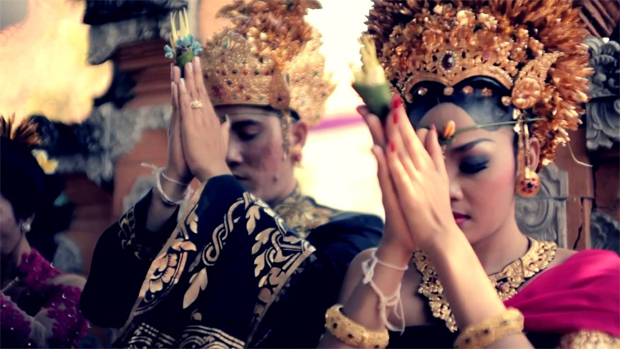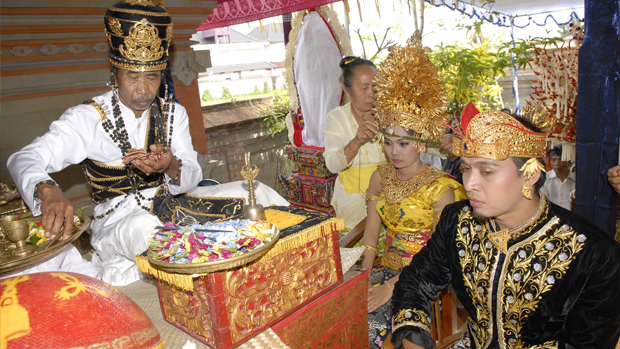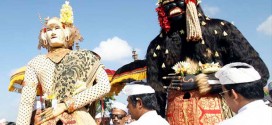
In addition to the funeral ceremony (ngaben), one of the interesting religious and customary activities of Hindu-Balinese to know is pawiwahan or wedding ceremony. The same like others customary, in Balinese society pawiwahan ceremony is a form of sacred and noble commitment because in essence it is a testament to the ceremony before the Sang Hyang Widhi Wasa and the gods (gods Witness), the abstract creatures that live in the “underworld” (Bhuta Witness), and to fellow human beings (Manusa Witness). These testimony referred to as the “three Witness” (Tri Upasaksi). Like the other religious ceremonies in public-Hindu-Balinese, implementation pawiwahan ceremony was also aided by a large family of both the bride and the surrounding community
Hindus have a purpose in life is called Catur Purusa Artha, those are Dharma, Artha, Kama and Moksha. These cannot be performed at once but gradually.
Stages to achieve the four goals of life are called Catur Asrama. Those are Brahmacari, Grhasta, Wanaprasta and Sanyasa. At Brahmacari level is priority to get the Dharma and knowledge. Grhasta is prioritizing to realize artha (wealth) and kama (lust or passion). At this level, Balinese are doing marriage. While in Wanaprasta is a level for preparing Sanyasa level. Finally at Sanyasa level is prioritized to achieve moksha. Moksha is purpose of Hinduism that is a state of unity spirit with God. Base on this reference for Balinese, besides for continuing descent, marriage is a part of Balinese believe to achieve goals of life.

In Bali Customary Law, there are four marriage systems. The first is Mapadik. Mapadik means proposed. In mapadik, the groom family comes to bride family to propose to hold a marriage. The Mapadik is done when family, bride and groom give consent for the marriage or there is good relationship between family, bride and groom. This is a honorable way of marriage and expected by all parents in Bali. The Second is Ngerorod, where the bridal couple love each other but they elope and without parental consent of the woman. Being no consent, the groom or his relatives will “kidnap” the bride. Some “the ngerorod” happened when the groom comes from lower caste or there is different social status between the bride and grooms. It is also a cheaper way for people to get married.
Nyentana / Nyeburin (selarian): Form of marriage is based on the change of status as “purusa” (man) of the bride and as “pradana” (woman) of the groom. In this system, the bride will purpose the groom and take him to her home. Simply, the woman is to be as if a man. It happened when the woman is only child or has no brothers, so she need a man to be “purusa” as heir. The fourth is Melegandang / forcibly without love. This system of forced marriage is not based in love with love. Nowadays it was rarely. Melegandang can be found at past in kingdom era. When the King wants to marry any woman he likes, he will force (melegandang) to marry the bride without love each other and purposed.




